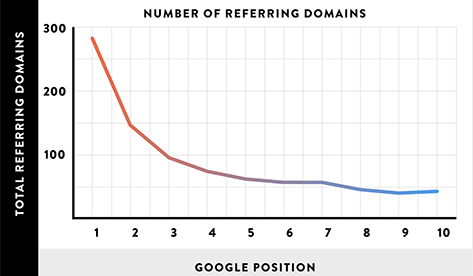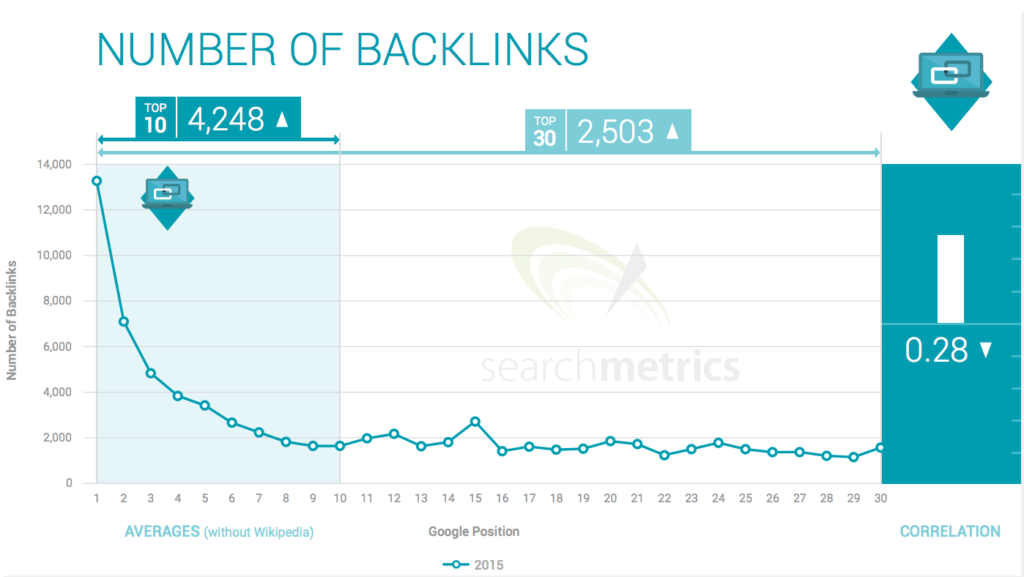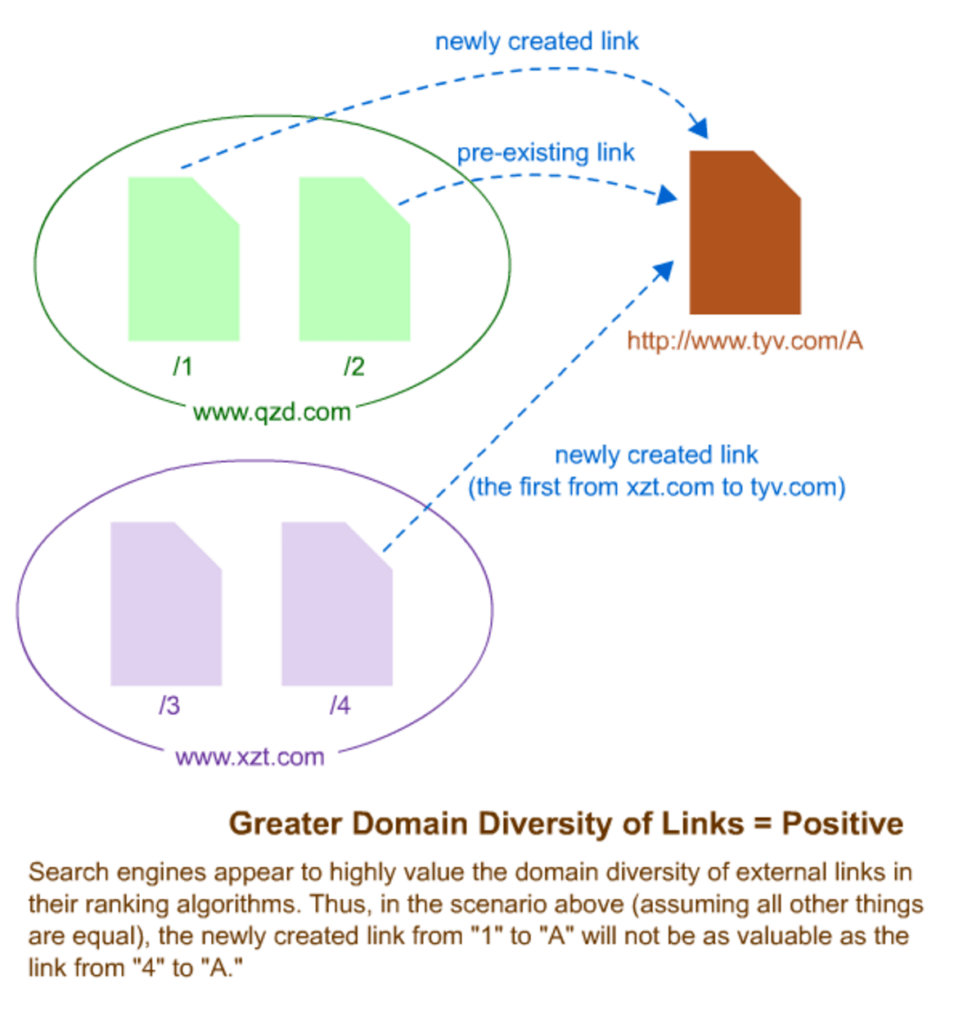
Contrary to what seems to be popular belief: links still move the needle.
They don’t even have to be great links (I’m not saying they shouldn’t be), I’m just saying they don’t have to be.
But first a bit of background.
If you run through signal analysis from many of the trusted sources in SEO, you’ll notice a link-based theme:
MOZ’s 2015 ranking factors survey list of most influential factors on Google’s ranking algorithm:

Source
Backlinko’s study of over 1 million Google search results:
SearchMetrics 2015 Google Ranking Factors Study:
All the studies make the same data-backed conclusion, he who ranks #1 tends to have more links when analyzed across large populations of keywords and websites.
Backlinks to your website are still the #1 driver of relevance and trust to Google.
Links Are All That Matter

Well, not exactly.
It’s still critical to have your on-page SEO built out properly; clean HTML, fast load times, relevant information architecture, semantic and topically relevant content, etc. – but links are still really important.
Looking at the data from the recent studies from MOZ, Backlinko, and SearchMetrics – the number of links, and more so number of linking root domains, is still the highest correlated signal to high organic rankings.
But it’s not as simple as just getting more links to move the needle on competitive keywords and crack page one, because…
Not All Links Are Created Equal
Links from stronger (in terms of authority), more contextually relevant, and more trusted sites are going to make a bigger impact on moving your rankings – as well as new links from new domains.
And building links is hard, especially if you’re going about it in the most sustainable way possible; by building things worth linking to.
Earning your links doesn’t mean you’re going to get the links you want, those sweet DA40+ links all coming from unique top-level domains – but, it does mean you’ll be developing a natural and clean link profile.
In the age of Google’s scary zoo animal *****, this is a good move.
However, what if you want to move the needle faster?
What if, you wanted to try link building tools or explore some of the sites that are ranking with manufactured links?
Looking at Links in the Wild
There are lots of legitimate, white-hat ways to continue to build links – and for the most comprehensive list of these strategies I would recommend checking out Point Blank’s giant resource list.
As for the less savory methods of engineering links, there’s more or less 2 methods for manufacturing:
- Building or buying links on private blog networks (PBN’s), or
- Going completely black-hat and injecting links into sites.
The issue with both of these beyond them being strictly against Google’s guidelines, is that they both still work in many capacities – which I’m going to show you.
*NOTE: All site names have been blurred out an I’ve made a strong effort to obfuscate all URL’s. This is not an attempt to out anyone – I’m not the judge or the jury, I’m simply using these sites as examples.
For starters, let’s look at examples of point #1;
Manufacturing Links on Owned or Controlled Websites
This first site is an Amazon affiliate site ranking for a nice chunk of commercial keywords:
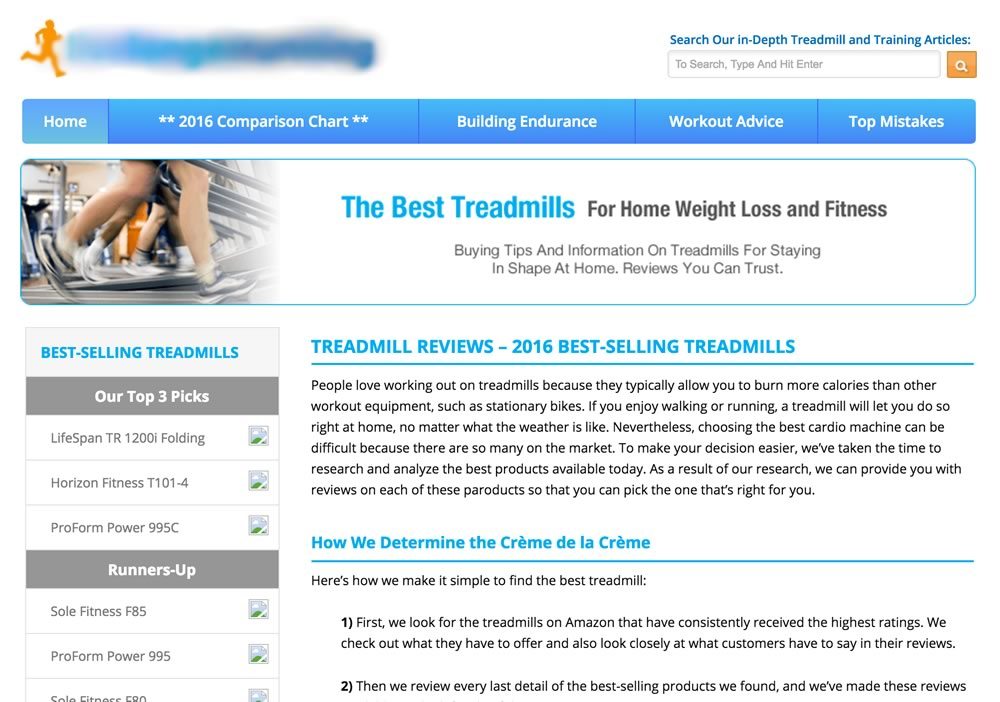
here’s a look at some of their commercial rankings, as discussed in my post on blogging for money, look at the average CPC of these keywords:

and furthermore, check out some of the Top 5 rankings they have for some pure money terms (commercial investigation and transactional keywords):

where this gets really interesting is when you start to look at the actual quality of the sites linking to them:
Linking Example Site #1

Linking Example Site #2
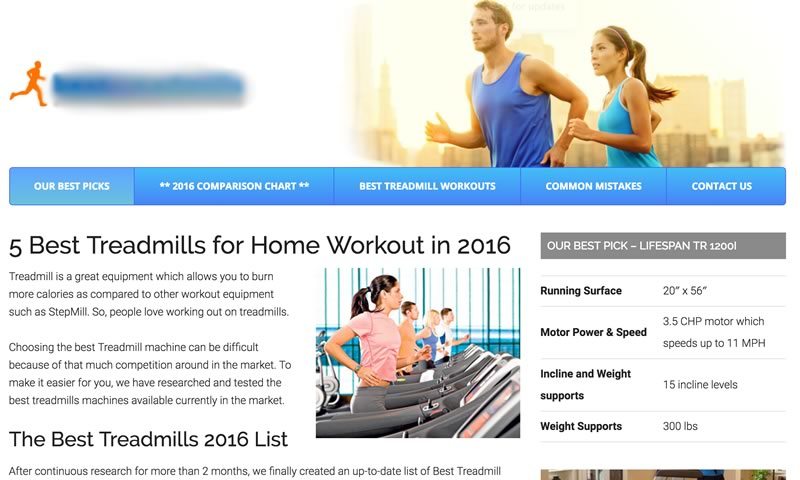
Linking Example Site #3

^Those are all pretty common PBN-style sites, and it even looks like some of previous PBN’s built out to rank this site have been deprecated (below); my guess is either because the money site got hit by Penguin and this was required housekeeping -OR- the site got de-indexed.

These sites are all contextually relevant, have some decent content (some of them) and are obviously moving the needle with rankings, to the tune of ~$100,000/month in commercial keyword value.
Now moving onto looking at links from method #2:
Manufacturing Links via Code Injection
Welcome to the dark part of the SEO world.
This is an area I’m personally completely against – it’s scummy, it’s messing with innocent people and businesses websites, and in many cases it’s ******* (as it should be).
I’m going to take you down the rabitthole of a VERY high domain authority website that makes it’s money from affiliate links. When I say high DA, I mean over 80 (yeah, really).
NOTE: just like before, I’m not going to out this site – if you’re a real SEO worth your salt and you want to find the site, I won’t need to.
With that said, what these people are doing to the site’s they’re exploiting for links is shitty, and I SERIOUSLY contemplated exposing this bullshit.
But, to repeat my earlier point; I’m no judge and jury, so it’s none of my business.
Here’s the site:
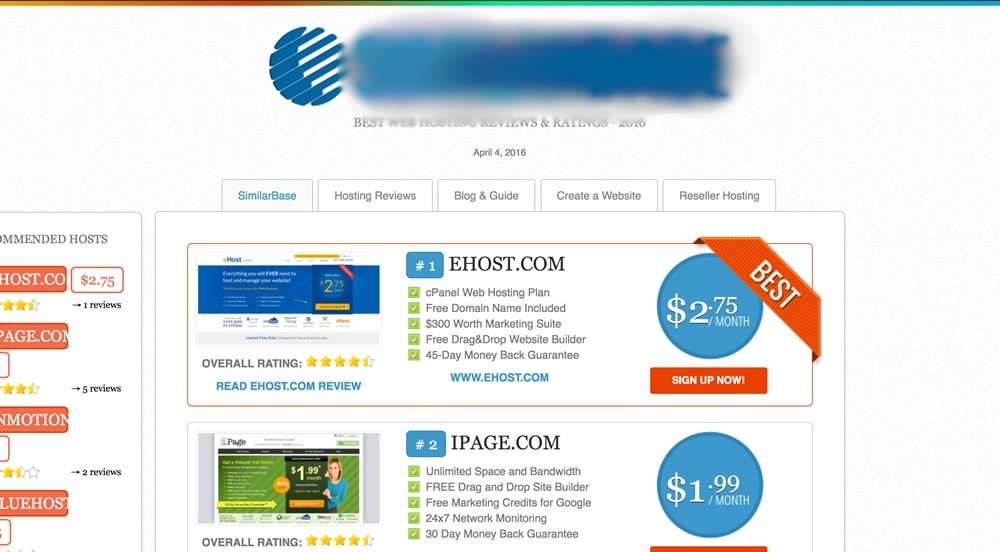
What’s really interesting about their link profile is that they’re using a mix of PBN’s, many of which are affiliate sites themselves, and then in addition they’re using a large amount of injected links.
Here’s a sample of their PBN sites:
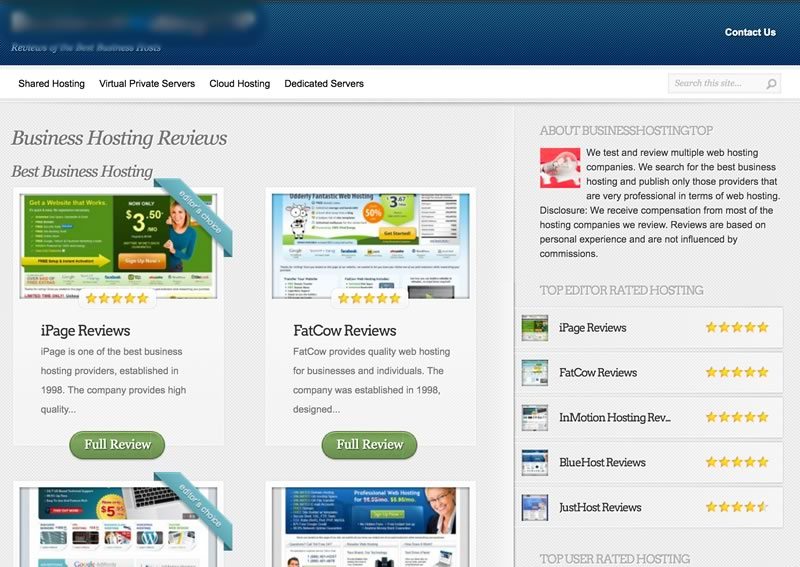
and another one:

Not too bad looking right?
They’re definitely better than the fitness ones I showed earlier, and way better than most; but still obviously engineered for the sake of links;

Onto the Filthy Links

^What you’re looking at there is a homepage link being maliciously injected into the site’s code, without any knowledge from the site’s owner.
Here’s another injected link but this time instead of hiding it with a <noscript> tag, their using in-line styles to “indent” the container by 9,999 pixels:
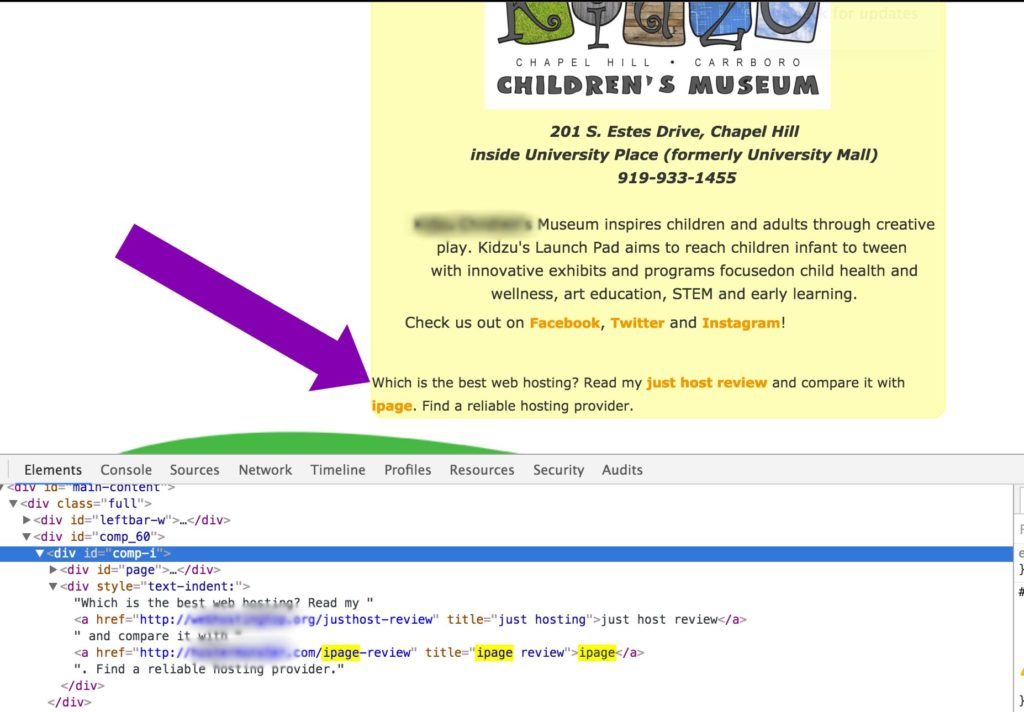
^In the example above I’ve zeroed out the “text-indent” being added via a style tag to the div – which is why you can clearly see the sentence and 2 links being injected into the homepage.
Here’s what it looks like without removing the “text-indent:”
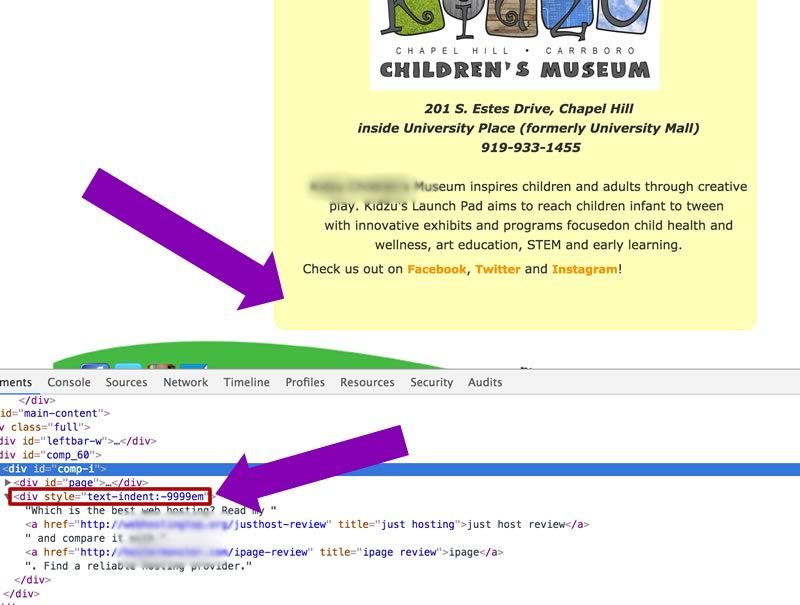
in the words of Clark Griswold:
“Can’t see the line can you Russ?”
Sorry for my Christmas Vacation reference, I couldn’t help myself.
Moving right along, here’s another one of their links that’s being injected with the <noscript> tag:

and another one using in-line styles to hide the content and links:

I could just keep going… their entire link profile of just over 12 million links is chocked full of this crap.
Remember
The domain authority of this site using all these shitty, spammy AF link tactics is over 80; EIGHTY!
Still think links aren’t important?
How Much of a Difference Can These Links Make?
You tell me:

and just to clarify, let me mouseover that October 2015 rankings breakdown real quick…
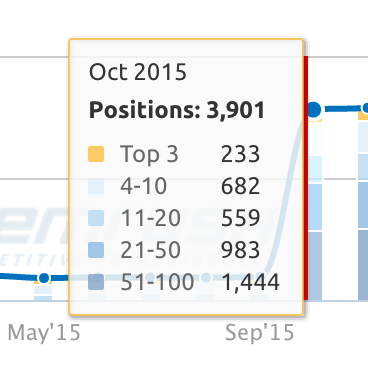
^Take a good look:
- 233 top 3 rankings
- Over 900 Page 1 rankings, and
- Nearly 1,500 rankings on the first 2 pages of Google
What’s worse is this is a legitimate software company, well, at least their software seems legitimate.
But check out how crappy some of these PBN’s are:
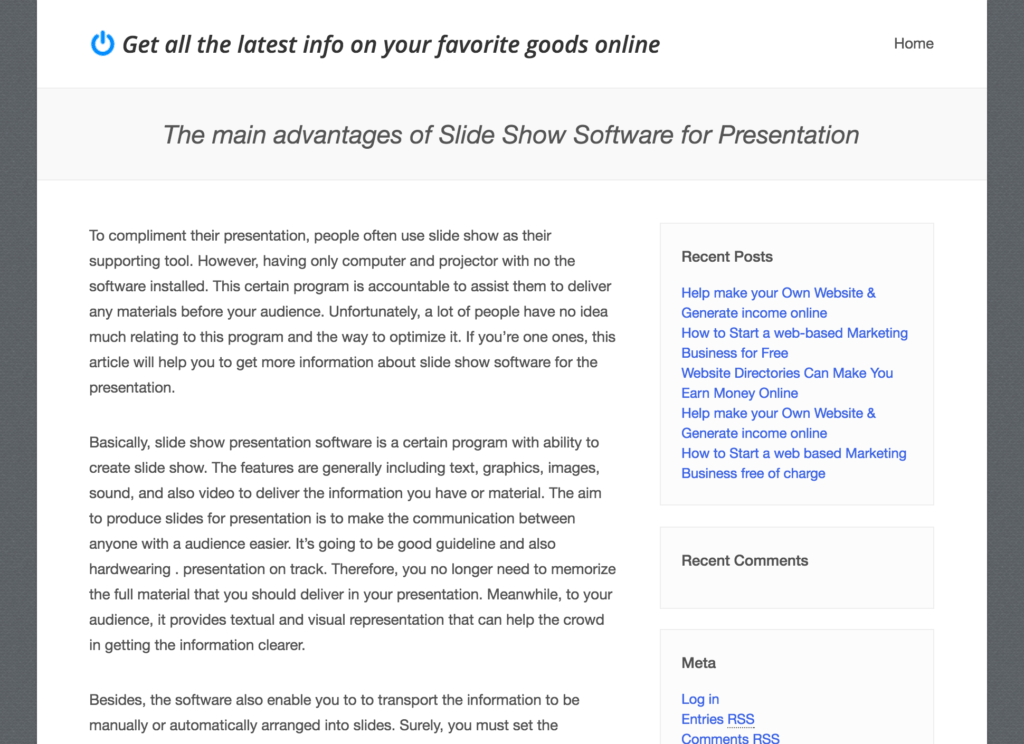
Pretty craptastic right? Here’s another:
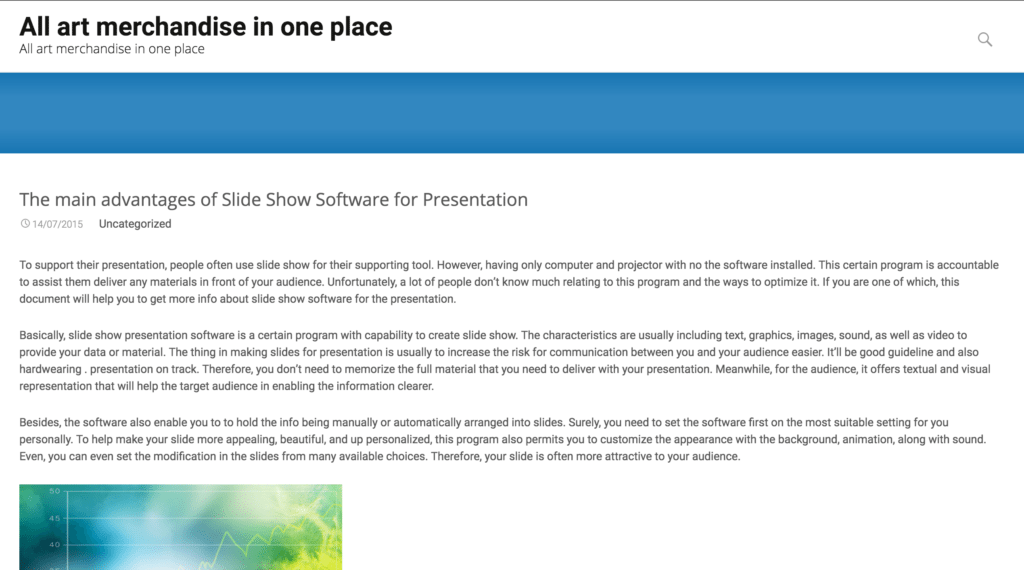
and another:

and yet another:

but…
they’re working, for now:
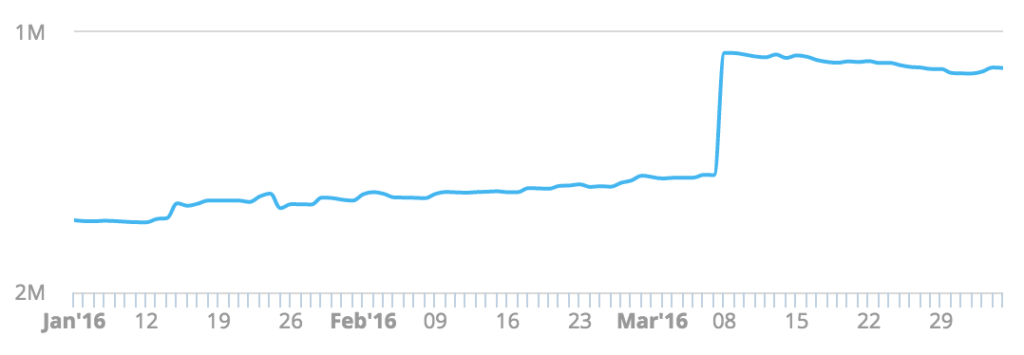
What Can You Do?
That’s a tough question.
You can put your nose to the audience and content research grindstone, hire some crazy expensive content production and/or marketing firm, and bust your ass to earn links.
Which is honestly a good idea, but a really expensive one.
Then there’s the old adage of; if you can’t beat ’em, join ’em.
The good news about this is it’s no longer an all or nothing game – you can engineer the success of earning link placements, and you can do so from large, established, and trusted publishers.
You just need the relationships, or at the very least, a path to the introductions.
Here’s where a little experience goes a long way, and
Looking for Real Links?
We’ve painstakingly built and refined a process for outreach that lands real, high authority links from publishers explicitly relevant to your website.
If you’d like to get more information on high authority, high trust, contextual links proven to increase rankings get in touch today (ask for Nick).
